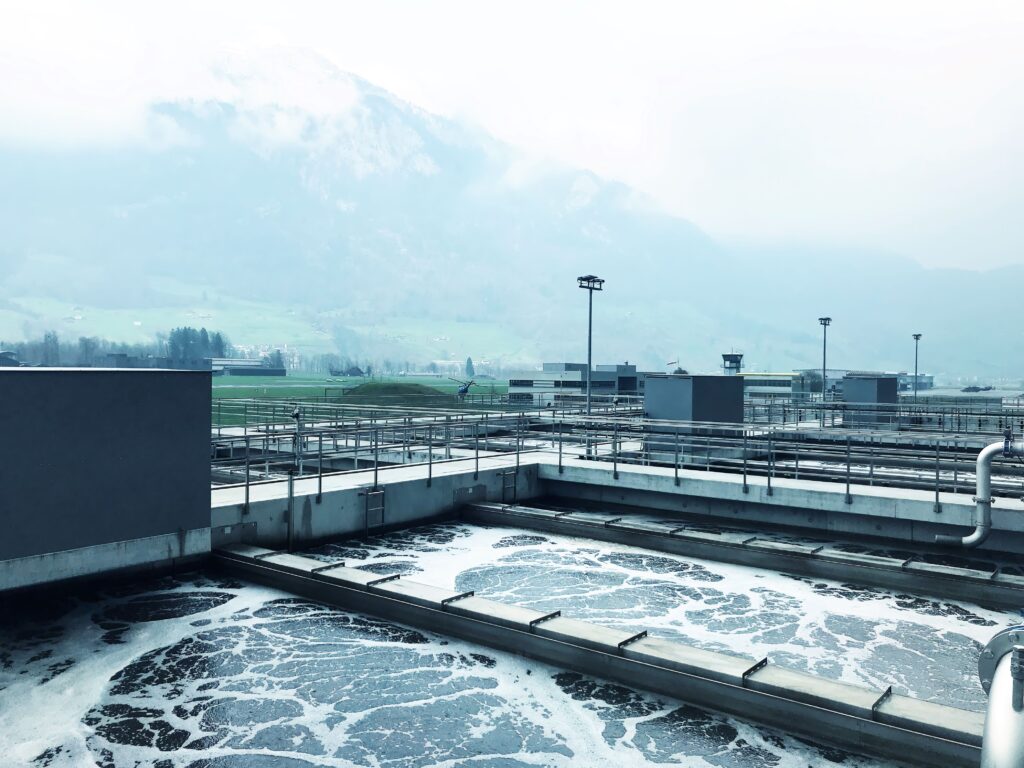PPCPs, Plastics, Pesticides & PFAS: The New Pollutant Paradigm
The modern world is experiencing rapid transformations in technology, industry, and consumer behaviour, leading to the emergence of new forms of pollution. These contaminants, once invisible to conventional treatment systems, are now altering the chemical makeup of our wastewater.
What Are Contaminants of Emerging Concern?
CECs are a diverse and growing class of chemical substances newly detected in water systems. Many were previously unmonitored and are not fully addressed by existing regulations. They originate from sources like pharmaceuticals, personal care products (PPCPs), cleaning agents, flame retardants, pesticides, endocrine-disrupting compounds (EDCs), and synthetic materials such as PFAS (“forever chemicals”).
CECs typically enter water systems through domestic sewage, hospital effluents, industrial discharges, agricultural runoff, and urban storm water. Even in trace concentrations, their biological activity, environmental persistence, and ability to bio-accumulate pose significant harm. Conventional wastewater treatment often fails to remove them, leading to their persistence in natural water bodies. Substances like 1,4-dioxane, GenX chemicals, pharmaceuticals, and micro-plastics are now under increased scrutiny due to their toxicity and long-term environmental impacts.
As awareness grows, CECs are becoming a critical focus for wastewater and drinking water professionals. Understanding their sources, behaviour, and treatment challenges is essential to protect both ecosystem health and public water safety in the face of evolving chemical risks.
Understanding the Origins of CECs
CECs originate from a wide range of modern industrial, medical, and domestic activities:
- Households: Pharmaceuticals, personal care products, synthetic fabrics.
- Hospitals & Healthcare Facilities: Antibiotics, contrast agents, disinfectants.
- Industrial Discharges: PFAS, surfactants, persistent organic pollutants from manufacturing and processing.
- Agricultural Runoff: Pesticides, herbicides, veterinary antibiotics.
- Landfills & Stormwater: Microplastics, leachates rich in CECs.

Once released, these compounds often persist through conventional wastewater treatment, ending up in surface water, sediments, or bioaccumulating in aquatic organisms. Environmentally, CECs disrupt endocrine systems, promote antibiotic resistance, and contribute to ecosystem imbalance. Health concerns include developmental toxicity, thyroid disorders, liver damage, and links to certain cancers and immune suppression (e.g., PFAS).
Recent investigations highlight the urgency: in 2023, the U.S. Geological Survey reported PFAS in nearly 45% of U.S. tap water, and antidepressants were found accumulating in fish brains in the Great Lakes region. Another study published in Environmental Science & Technology found antidepressants accumulating in the brains of fish in the Great Lakes region.
What Are the Health Effects of CECs in Drinking Water?
Although research is ongoing, many CECs are known or suspected to be hazardous. Health impacts vary depending on the compound and exposure duration:
- 1,4-dioxane: Considered a likely human carcinogen.
- Phthalates and parabens: Classified as endocrine-disrupting chemicals (EDCs), capable of interfering with hormonal functions.

- PFAS: Linked to thyroid issues, liver damage, immune suppression, and certain cancers.
- Low-dose exposure: Some CECs may not cause immediate symptoms but could pose long-term risks, particularly during critical stages of development.
There is increasing concern that chronic exposure, even at low concentrations, could affect vulnerable populations such as children, pregnant women, and immunocompromised individuals.
How Do You Remove CECs?
The diverse chemical properties of CECs make their removal challenging for conventional water treatment systems. Standard processes such as sedimentation, chlorination, or biological oxidation are generally ineffective against these persistent pollutants. Consequently, utilities must employ advanced or hybrid technologies.
To address them, utilities must rely on advanced or hybrid
| Technology | Best For | Remark |
|---|---|---|
| Reverse Osmosis (RO) | Broad range of micro-pollutants and PFAS | Separation only: These processes do not destroy pollutants. RO and NF create a concentrated reject stream (brine) that is rich in CECs and requires costly post-treatment. |
| Nanofiltration (NF) | Medium-sized organics, pharmaceuticals | |
| Advanced Oxidation Processes | Hormones, pesticides, and pharmaceuticals, PFAS | Destruction: This technology has specific operational considerations and can break down persistent contaminants. |
| Granular Activated Carbon | PFAS, taste/odor compounds, industrial solvents | Adsorption: The carbon becomes “spent” and must be removed or reactivated through energy-intensive treatment. |
While separation technologies like RO, NF, and GAC are effective at pulling contaminants from the main water flow, they are not a final solution; they consolidate the problem into a secondary, highly toxic waste stream (brine or spent carbon) that requires further disposal or treatment.
Advanced Oxidation Processes (AOPs), in contrast, are a destructive technology.
The Advantage: AOPs work by generating highly reactive molecules, such as hydroxyl radicals (·OH). These radicals are extremely powerful, non-selective oxidizers that physically break down persistent organic pollutants (like PFAS, pesticides, and pharmaceuticals) down to a molecular level. When optimized, this process can mineralize contaminants, converting them into harmless end-products like carbon dioxide, water, and inorganic salts. This eliminates the pollutant from the environment rather than just removing it.
Drawback: AOPs can have higher operational costs, as they are often energy- and chemical-intensive (e.g., requiring UV lamps, ozone, or hydrogen peroxide). The process chemistry is also complex and must be carefully optimized for the specific water matrix, as other substances in the water (like bicarbonate) can “scavenge” the radicals and reduce efficiency. If not properly controlled, some AOPs also run the risk of creating undesirable by-products (e.g., bromate) if certain precursors are present.
VA TECH WABAG and BIOZONE Technology:
VA TECH WABAG is at the forefront of tackling CECs with its innovative BIOZONE technology. VA TECH WABAG’s BIOZONE technology offers an advanced solution for the removal of persistent organic pollutants such as recalcitrant COD (Hard COD) and CECs. Designed to tackle contaminants of emerging concern, BIOZONE integrates advanced oxidation processes with optimized biological treatment, enabling effective degradation of highly stable CECs that conventional treatment systems struggle to remove. By breaking down CECs at the molecular level and enhancing biodegradability, BIOZONE significantly reduces their concentration in wastewater and minimizes the risk of accumulation in the environment. This not only ensures regulatory compliance for discharge standards but also protects downstream water users and aquatic ecosystems from the long-term health and ecological risks associated with various CECs.
